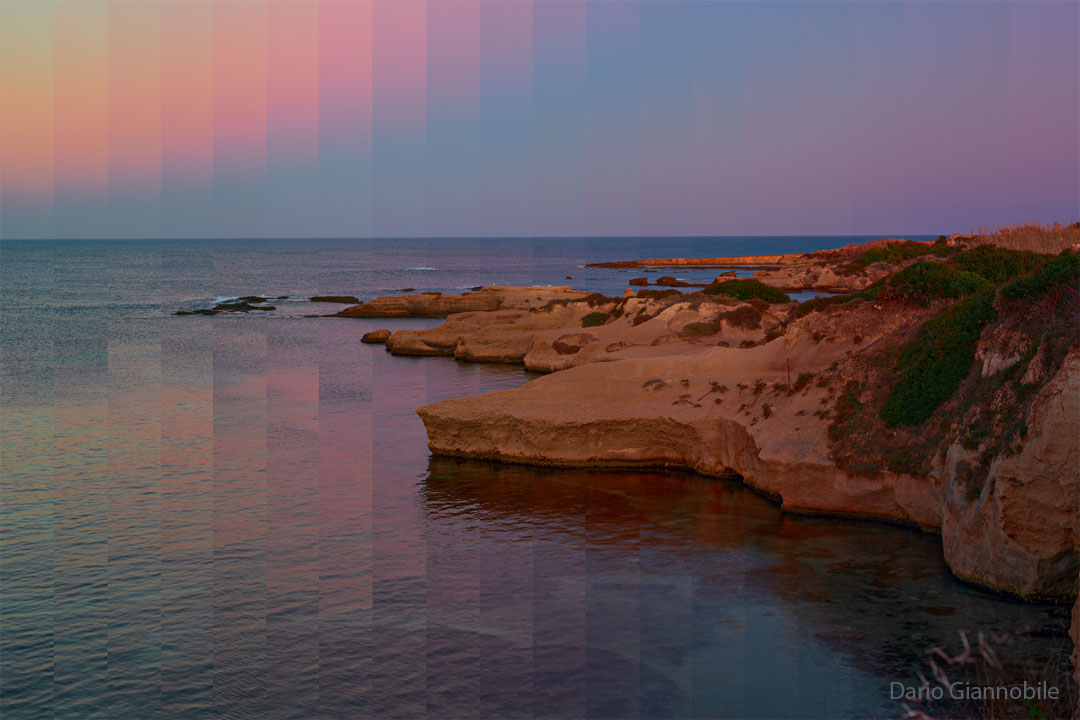2024年2月28日
Shades of Night
Image Credit & Copyright: Dario Giannobile
Explanation: How does the sky turn dark at night? In stages, and with different characteristic colors rising from the horizon. The featured image shows, left to right, increasingly late twilight times after sunset in 20 different vertical bands. The picture was taken last month in Syracuse, Sicily, Italy, in the direction opposite the Sun. On the far left is the pre-sunset upper sky. Toward the right, prominent bands include the Belt of Venus, the Blue Band, the Horizon Band, and the Red Band. As the dark shadow of the Earth rises, the colors in these bands are caused by direct sunlight reflecting from air and aerosols in the Earth’s atmosphere, multiple reflections sometimes involving a reddened sunset, and refraction. In practice, these bands can be diffuse and hard to discern, and their colors can depend on colors near the setting Sun. Finally, the Sun completely sets and the sky becomes dark. Don’t despair — the whole thing will happen in reverse when the Sun rises again in the morning.
Tomorrow’s picture: extra February
夜晚的色彩
影像提供与版权: Dario Giannobile
说明: 夜空是如何变暗的?会分阶段,同时并有相对应的特征色彩从地平线升起。这幅由20个垂直带拼成的主题影像,从左到右呈现了太阳下山后愈来愈晚的暮光时分。这幅影像是在上个月,背对太阳摄于意大利西西里岛的锡拉库萨市。影像最左边的是日落前的天空。在其右侧,较鲜明的带区有金星带、蓝带、地平线带和红带。随着地球的影子升起,这些带的颜色是源自受地球大气的空气和气溶胶反射的阳光,及有时经过多次反射和折射的红化阳光。在实际景观里,这些带可能很弥漫难以辨识,而它们的颜色也会取决于落日周围的色彩。最后,太阳深深没入地平面,天空变得漆黑如墨。不过别绝望,当早晨的太阳再次东升时,将出现与入夜完全相反的过程。
明日的图片: extra February




Pingback: 巨石阵上空的英仙座流星 – WERLS-树莓派 raspberrypi
Pingback: 巨石阵上空的英仙座流星 – NASA中文
Pingback: 月亮与冒烟圈的埃特纳火山 – NASA中文
Pingback: 超新星遗迹Simeis 147 – NASA中文